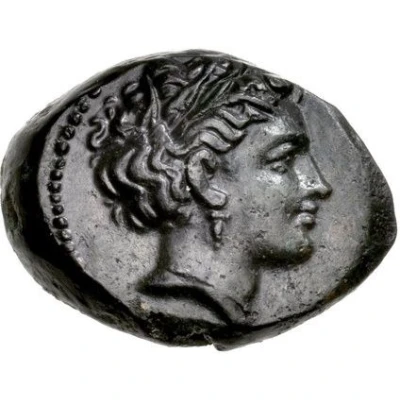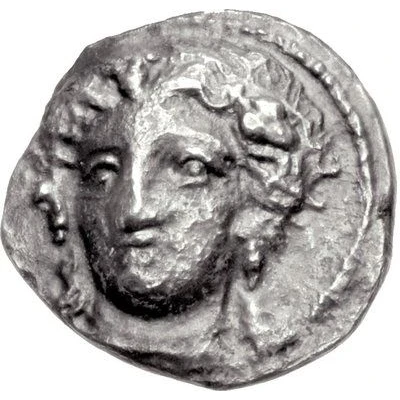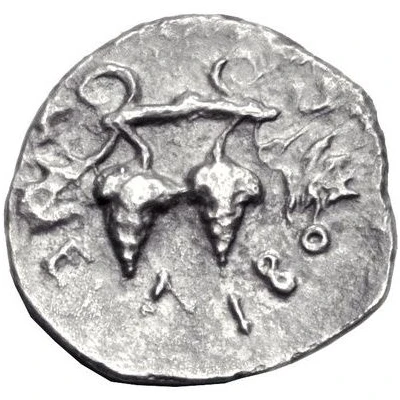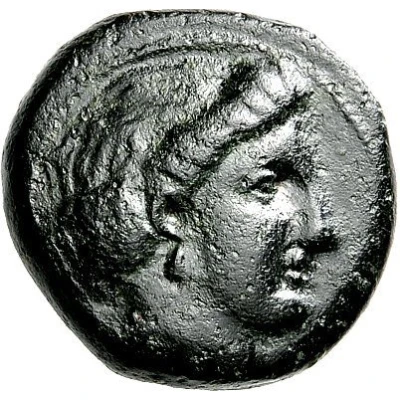
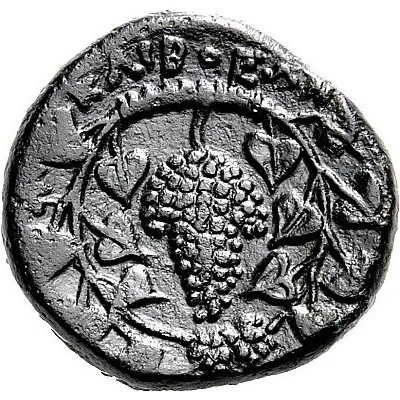

© Nomos AG
Trichalkon 352 BC - 344 BC
| Bronze | 7.98 g | 20.0 mm |
| Issuer | Meliboia (Thessaly) |
|---|---|
| Type | Standard circulation coin |
| Years | 352 BC - 344 BC |
| Value | Trichalkon (1⁄16) |
| Currency | Drachm |
| Composition | Bronze |
| Weight | 7.98 g |
| Diameter | 20.0 mm |
| Shape | Round (irregular) |
| Technique | Hammered |
| Demonetized | Yes |
| Updated | 2024-10-10 |
| Numista | N#170689 |
|---|---|
| Rarity index | 100% |
Reverse
Bunch of grapes bound to and encircled by an ivy wreath
Script: Greek
Lettering: ΜΕΛΙΒΟΕΩΝ
Comment
Helly 2004 pl. 3, 24 (but ascribed to Eurymenai); SNG Copenhagen 249 (but ascribed to Rhizos). Rogers -.
Interesting fact
The Trichalkon coin was used in ancient Greece during the 4th century BC, and its name comes from the Greek words "trichalkos," meaning "three chalkoi," which refers to the three small balls or pellets that appear on the coin's reverse side. These pellets were used as a symbol of the goddess Hera, who was revered in the region where the coin was minted. The coin's design was meant to signify the coin's value and authenticity, and it's a unique feature that sets it apart from other ancient Greek coins.
